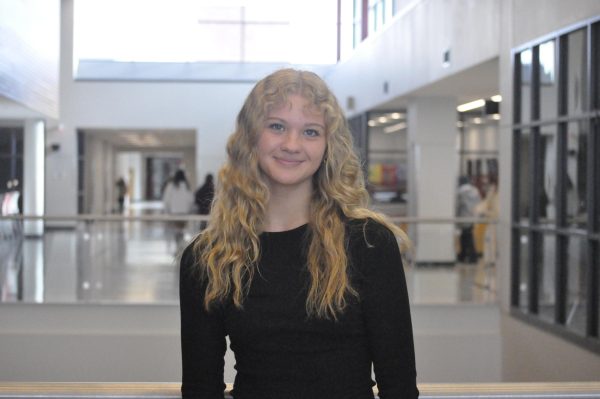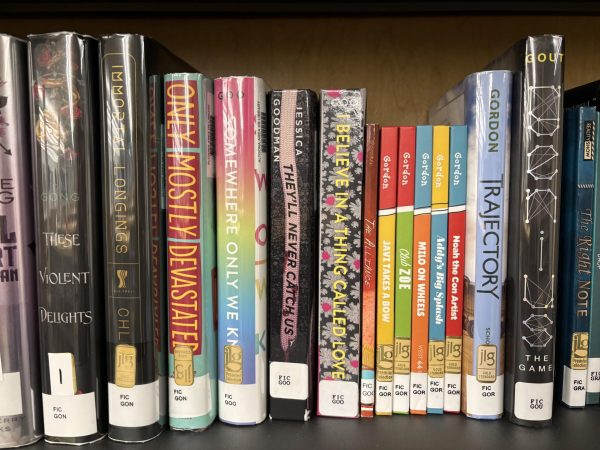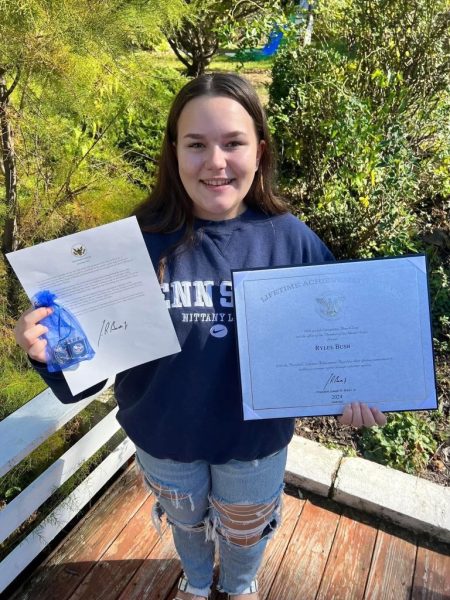Sensing something new: AAHS plans for sensory garden
Matteson and her class stand outside where the sensory garden is planned to be built.
When the new and improved high school opened in 2021, students reported a lack of plant life. Outside nearly every window you’ll see either a road, another road or a parking lot. A typical seven hour day feels like 15 when all there is to look at is the SmartBoard or a Subaru passing below.
For special education teacher Paige Matteson, the drab scenery is merely a blank canvas of opportunities.
“Maria Tyger used to work here as one of the emotional support teachers. She had worked at another school closer to Pittsburgh previously, and they had a sensory garden there. So, she came up with the idea to bring it here and asked if I would be willing to help her get it going,” Matteson said.
A sensory garden is a garden for visitors with disabilities to experience working in a garden and stimulating their senses. It helps strengthen maturity and provides a healthy environment for students to express their emotions.
“It was about late May of last year when Mrs. Tyger and I first met,” Matteson said. “We presented the idea to the Board of Foundations, and they wanted to get a grant to help us build it. We came up with a preliminary idea, and they said it was great. I talked with Mr. Neely, and he said he wanted the whole school to be involved in some way. He wanted us to meet with Todd Bennett and have his architecture students design the garden for us.”
Each student in Bennett’s class was instructed to design a garden of their own. They were split into teams and then went on to present their projects to different teachers. Only some designs advanced to become finalists. The students used a program called “AutoCAD” to design everything. The models were in 2D, 3D and even turned into Lego diagrams.
“Part of their research, too, was figuring out how to meet the needs of every student in the school,” Matteson said. “So, Bennett’s class came to join our class for a while. I have students in wheelchairs, so they talked about ADA compliance. They figured out how to make planters that would fit those needs.”
The sensory garden didn’t get just the architecture classes involved, it also incorporates the GACTC. The masonry teachers are looking into the design drafts to see if the students can attempt to make planter molds.
“We are hoping to get the garden off the ground by early June. It’s going to take a while for the structure to be built and brought in, and you can’t do it in the middle of winter either,” Matteson said. “And, the cool thing is my students are eligible for an extended school year, based on IEP needs. So, they’re able to be here for the entire month of July.”
While gardens flourish the most in the summertime, vegetables like broccoli and cabbage can be grown in September. When the students get back to school, they are still able to experience some gardening before the winter hits.
“One of the cool things with life skills is that we cook,” Matteson said. “With the garden, we’ll be able to grow our own herbs and food. Eventually, we are hoping that we could get the business department involved. There’s actually a farmers market right downtown, so we were hoping we could go sell what we’ve grown.”
Despite the sensory garden being set in motion to help benefit students with disabilities, Matteson is eager to share the garden with the entire school.
“We’re in the middle of the city, and we don’t really have a ‘safe’ place to go during the school day. So it’s not just for the life skills classes, it’s for everyone in the school. We were even talking to the science departments about getting a botany club started. It would be a great place for students to conduct different experiments.”
The sensory garden has the capability to open opportunities for all the students and teachers in the school.
“I’m really excited for this garden,” Matteson said. “It’s going to be very beneficial for all of our kids.”

My name is Makenzie Closson. I am a second year member of the Mountain Echo and Horseshoe yearbook staffs. Last year, I became a PSPA finalist and even...




![Inspiration. Ten years ago, Price and Saboe found a way to memorialize Dodson and her impact in the volleyball program. The Erin Dodson Memorial volleyball games highlight Dodson's determination and positivity, even in the face of obstacles. "[We wanted] to be able to give to others based on the legacy that Erin had created as a person," Saboe said. "[We] thought honoring her like this would be the best way that we can honor her." (Courtesy of Sandra Mitchell)](https://aahsmountainecho.com/wp-content/uploads/2025/10/IMG_1319-1-e1759443066570-600x329.jpg)







